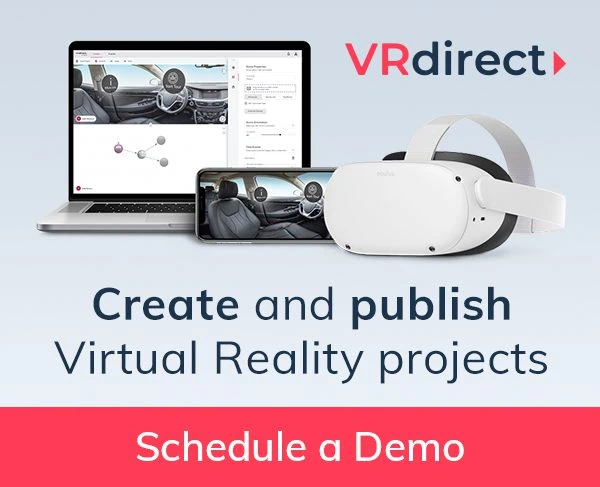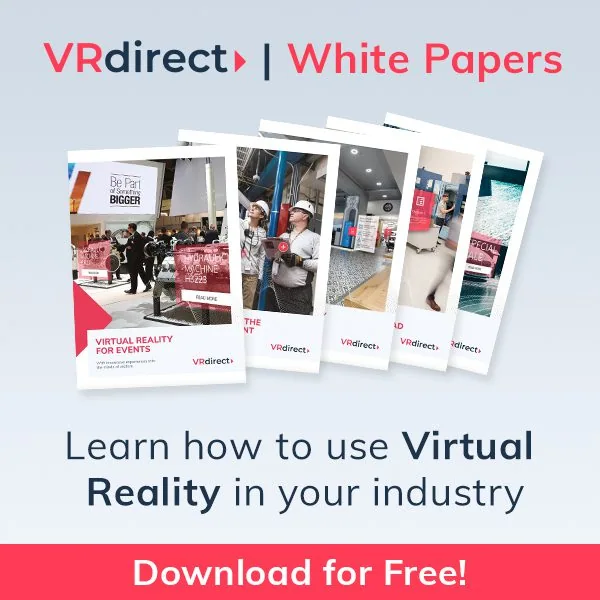Virtual Reality (VR) has come a long way in just the last few decades. It wasn’t all that long ago that VR existed purely in the realm of science fiction. Star Trek, Star Wars, and Tron helped to usher in a new era of excitement about Virtual Reality. However, the technology of the time just wasn’t there to push hardware over the goal line and make these dreamy digital worlds a reality.
The exact opposite is true today, and surely after some time, VR will touch every part of life. In fact, decades from now, we will think back and consider how we at any point lived without these advances, which is set to command the innovative landscape in the coming years.
Today, VR technology is right on the precipice of becoming mainstream, with more and more people engaging with this kind of technology than ever before. Unlike 3-D technology (which has disappeared from the consumer side of things after becoming red-hot four or five years ago), VR technology is building up a head of steam.
The video game community, in particular, is incredibly excited about everything VR solutions might offer, but small and midsize businesses, enterprise organizations, government agencies, and multinational corporations are all starting to take full advantage of everything VR has to offer.
We are staring down the very beginning of the Golden Age of VR. If you’ve been wondering why VR experiences work better than they ever did in the past, here are the reasons why VR is better today than it ever was – and keeps getting better almost daily!
1. VR has caught the imagination for quite a while – and it is finally delivering
The first hype for virtual reality began in the 90s when the earliest devices were presented. Nintendo’s Virtual Boy along with different arcades as well as model frameworks set up what the VR-world seemed to look like. It inspired a few books, movies and music videos that did their part as well. Early adopters of VR thought that they would be able to explore amazing digital worlds like in the movie Tron, but found that they were incredibly limited. The experience suffered greatly because of it. This image and the deficiencies left a junky, negative campy impression that has been difficult to shake ever since.
Today things look entirely different. VR technology has come of age. Gadgets, software, and hardware are reasonable, capable and progressively accessible. Today’s VR experience is a lot more refined and getting better on a day to day basis which inevitably increases the excitement people have for the tech already available (as well as the future tech in the VR pipeline).
Solutions like the ones that we make available here at cracker are helping to shape and mold the future of VR experiences. We here at VRdirect are always looking for ways to push the future of the VR world just a bit closer to our own!
2. Today’s virtual worlds are built from reality first
The biggest thing that helps to separate today’s virtual worlds (and Virtual Reality technology in general) from the early days of the tech has to be the fact that today’s VR experiences are built from reality first rather than cooked up on a computer from scratch.
One of the most notable challenges that people faced when they encountered early VR solutions was the “Uncanny Valley” experience. Our minds are capable of detecting when something seems “hyperreal” – to real to be believed – and it ruins the entire experience for us. It gives us an unsettling feeling that we might not be able to put our fingers on, but it just feels “wrong” all the same. Computer-generated graphics went into the Uncanny Valley more often than not, and the experiences suffered because of it.
Today, VR capture technology (especially 360° video and photography, as well as 360° scanning technology) allows us to capture the world in stunning high definition. However, if CGI has to be used the technology has grown very far as well so when real-world elements are implemented into the virtual world, they look like a 1:1 replica to the things that we encounter day to day basis.
The Uncanny Valley has been conquered and the VR experience has shot through the roof.
3. Immersion is finally a thing
Immersion is the name of the game when it comes to VR technology, and anything that pulls you out of the virtual world is always going to degrade the overall experience.
In the past, the only way to experience true Virtual Reality was to get suited up in an oversized, always hot, and unwieldy setup in a laboratory somewhere – and it ruined the experience and immersion.
Even if the VR experiences were perfect (but they weren’t back then), with that kind of setup on you’d know that the VR world wasn’t “real”. The technology of the day held the implementation of VR experiences back more than anything else.
Today, nothing could be further from the truth.
It’s now possible to enjoy everything that Virtual Reality has to offer with little more than mobile applications on your smartphone or tablet.
Dedicated headsets are available that are incredibly comfortable, and the setup often doesn’t even involve computers or smartphones anymore. It has become a lot easier to enjoy the overall experience and buy into the VR world wholesale in ways that weren’t possible before.
4. Your average consumer is more VR and tech-savvy than ever before
Today’s average consumer is a lot more technologically savvy and comfortable with Virtual Reality than they used to be in the past.
VR tech has existed for decades (even if it wasn’t as polished as it is today), but if people aren’t comfortable utilizing, the technology isn’t ever going to achieve the kind of widespread adaptation and excitement that you are looking for.
And when you’re talking about technology as expensive to develop as VR technology is (and somewhat still is today – unless you’re using tools like our own), there isn’t going to be much drive to push new solutions to market if your consumers are as excited about purchasing it or using it at scale.
Nowadays, however, we are more plugged in than we ever used to be.
Your average consumer is a lot more comfortable utilizing advanced technology all on their own, and the internet makes it a lot easier to share tool training to help people get up and running with VR technology (which speeds up adaptation, too).
5. Big businesses are driving its growth and utilizing
With the technology finally living up to it’s promise, big businesses start to get into the VR scene as well. Today non-tech enterprises are holding onto virtual reality as an e-commerce and branding device more and more. There doesn’t seem to be a car-showroom without a dedicated VR experience. Want to know what your new car looks like before it was even produced? No problem anymore.
Virtual reality is empowering a level of try before you buy that has never been seen. It has been grasped by the businesses such as Ikea, Myer, and additionally automakers such as Audi and GM.
VR isn’t only a vast industry, an entertainment space as well as a great marketing device. It’s likewise a potential answer for the enhanced remote conferencing and the introduction of exceedingly complex 3D ideas. Businesses like facebook are banking on that and will continue to do so in the future. And by that increase adaptation and acceptance of VR.
6. Training employees has become affordable
Another way virtual reality is already changing the world is through training experiences. One of the most talked about use cases of virtual reality is finally ready-for-use and because of the reasons stated above it’s finally useful.
Training employees in virtual worlds that replicate the real-life scenarios almost 1:1, seems to be too good to be true. With today VR experiences it isn’t. With devices like Oculus Go or – for the cheaper solution – the Google Cardboard, VR has become available as a training tool in many companies and is proofing its usefulness over and over again.
With vr software like VRdirect companies are now enabled to create their own VR training experiences – and they don’t even need coders or big agencies anymore. VR as a training tool has become affordable and with today’s technology useful. We here at VRdirect are always looking for ways to push the future of the VR world just a bit closer to our own!





